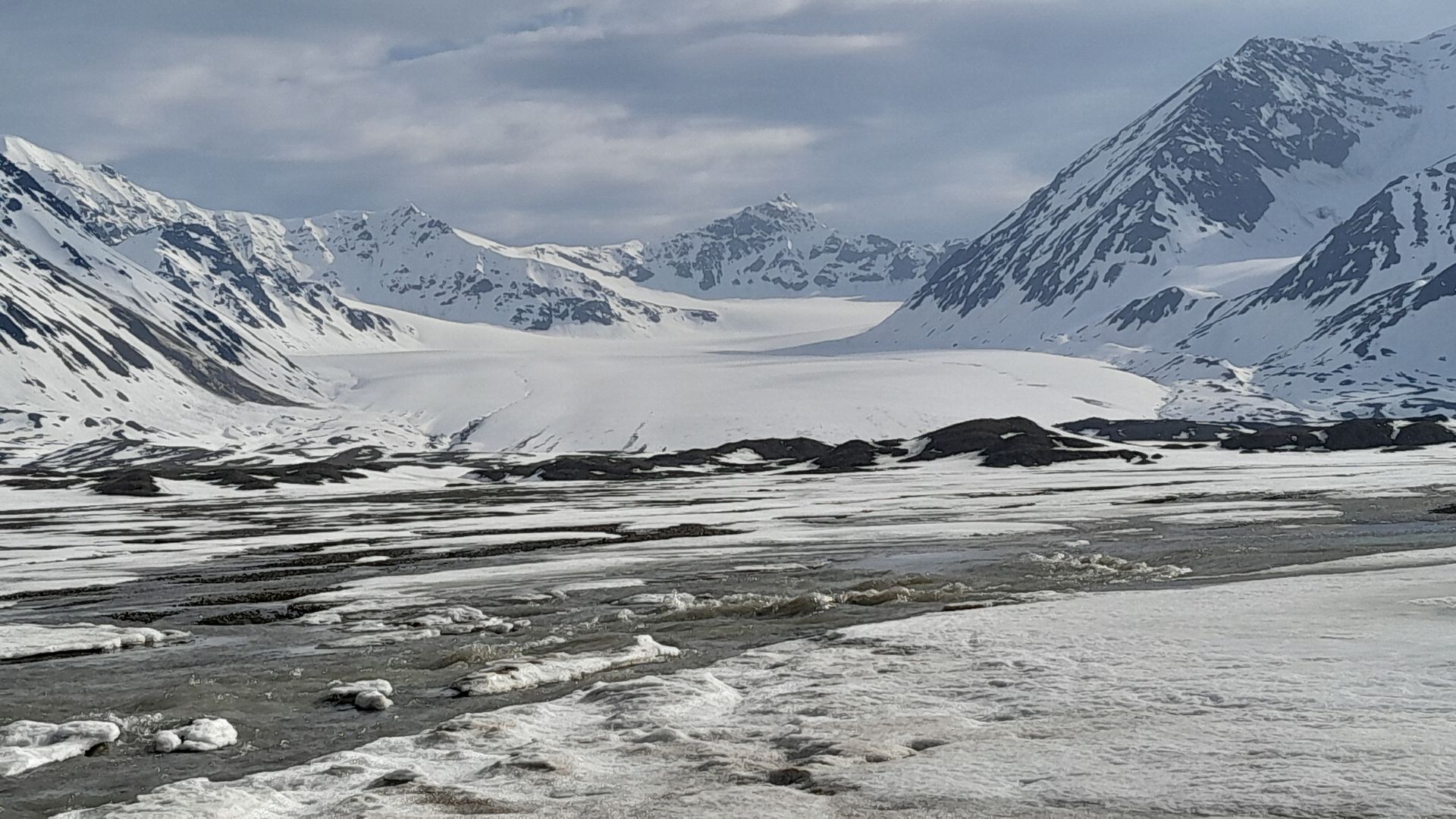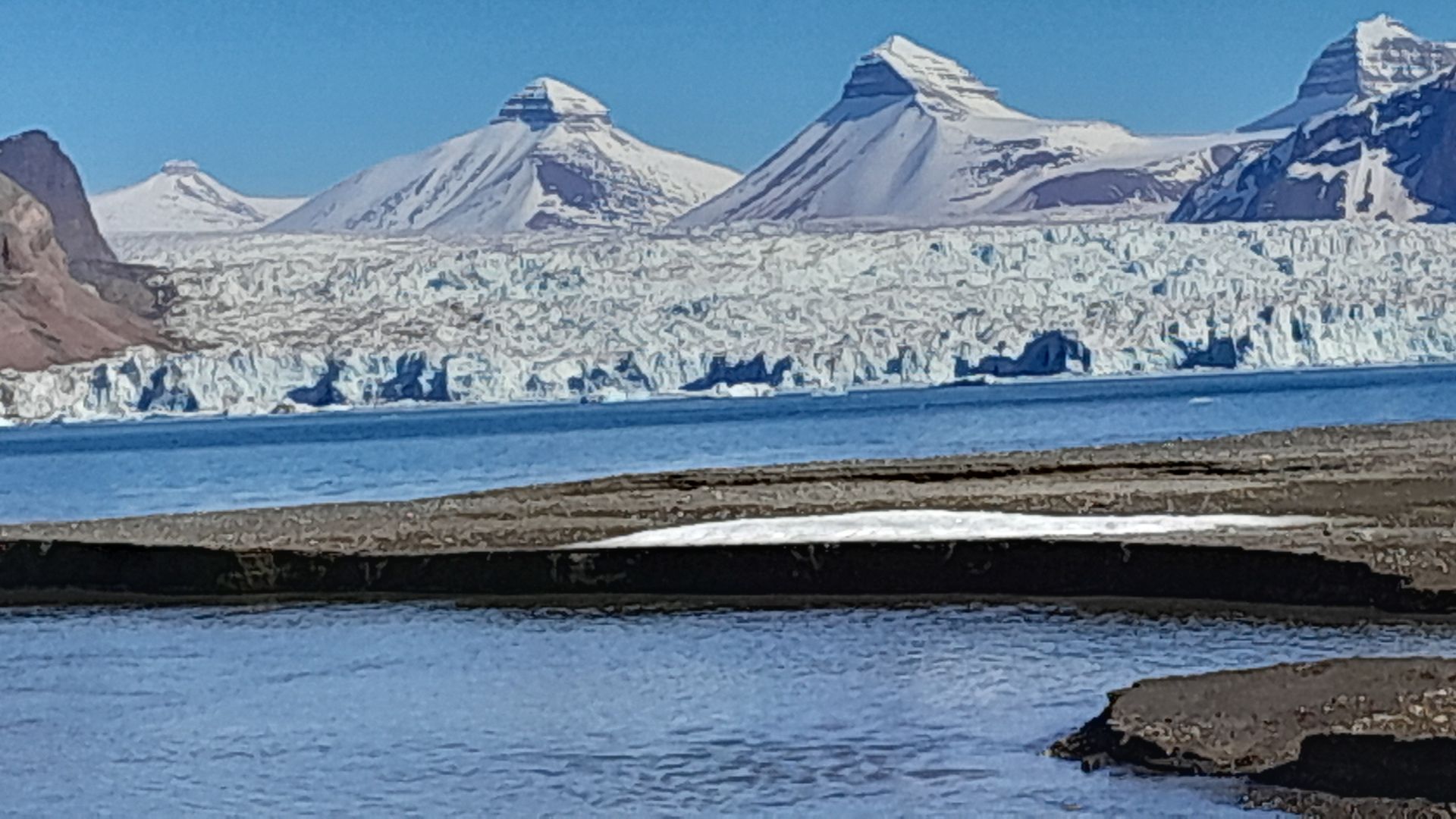Svalbard glaciers may be more resilient than we thought
February 18th, 2025
A new study has found that one of Svalbard’s largest ice caps, Åsgardfonna, survived the warmest period of the Holocene. This suggests that future increases in snowfall may help to slow glacier retreat in some Arctic regions.
The research paper by PhD student Andreea Gabriela Auer, and co-authored by Anders Schomacker from the iC3 Polar Research Hub, challenges the common assumption that warming alone dictates glacier loss.

.
Learning from the past to predict the future
The Arctic is warming more rapidly than the rest of the world. Many of its glaciers and ice caps are shrinking, contributing to rising sea levels. However, predicting future glacier changes is difficult.
Observations of Arctic precipitation are sparse, and models struggle to capture how snowfall and melting interact.
The researchers examined lake sediments from Svalbard that preserve a record of past glacier activity and reconstructed how Åsgardfonna responded to a warm period known as the Holocene Thermal Maximum (about 9,500 years ago).
.
A surprising discovery
Using advanced techniques, including End-Member Modelling Analysis (EMMA) of grain size distribution data, the team separated different types of sediment deposited in the lakes.
Their results showed that Åsgardfonna not only survived the warm period, but may have even advanced at times. The key factor seems to have been increased snowfall, driven by the loss of sea ice.

“When sea ice retreats, more moisture is available for precipitation,” said Anders Schomacker. “Our findings suggest that in some Arctic regions, this could enhance snowfall enough to partly offset glacier melt.”
The study found that Åsgardfonna’s survival was linked to increased winter snowfall. This snowfall replenished the glacier even as summer temperatures soared.
The researchers argue that similar processes may occur in other Arctic regions, such as parts of Greenland and the Canadian Arctic.
.
Which Arctic glaciers will disappear?
Current climate models predict that many Arctic glaciers will disappear as temperatures rise. However, this study suggests that some glaciers, particularly those near the sea-ice margin, may be more resilient than expected.
If future warming also brings more snowfall, it could slow glacier retreat in these areas.
“Our results highlight the importance of understanding precipitation changes in the Arctic,” said Anders. “If models underestimate future snowfall, they may overestimate glacier loss in some regions.”
However, the researchers caution that increased snowfall will not save all glaciers.
The balance between warming and snowfall varies by location, and many glaciers are still at risk of disappearing.
.
Read the paper
The study, “Hydroclimate intensification likely aided glacier survival on Svalbard in the Early Holocene”, has been published in Nature Communications Earth & Environment.
Anders Schomacker is a researcher at iC3 and the Department of Geosciences at UiT The Arctic University of Norway. He is the assistant lead of iC3’s training programme for early career researchers. His research focuses on glacial geology and past climate changes. List of publications here.